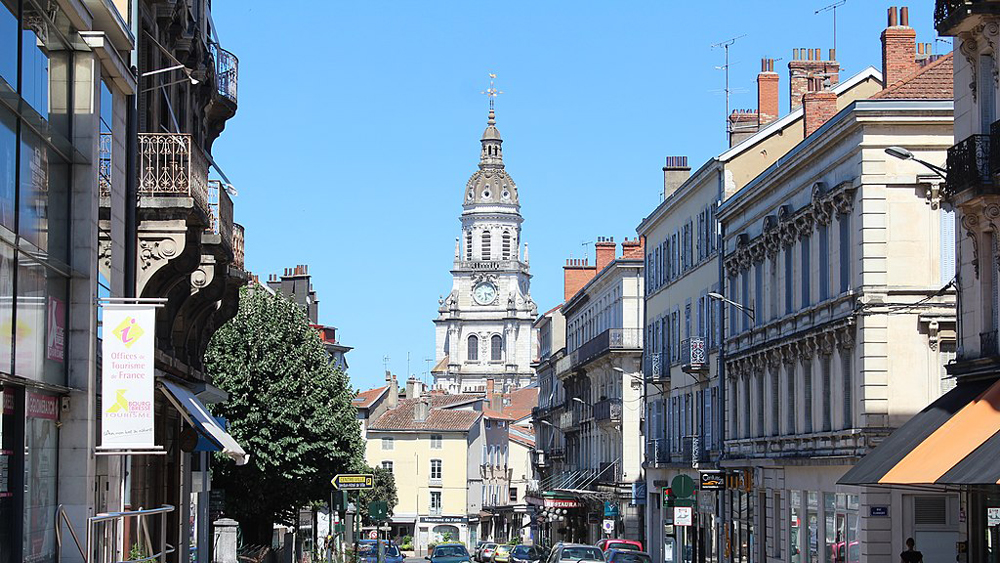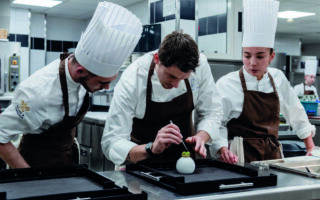
Discover the culinary delights of Ain: a foodie’s guide
At a glance: a foodie’s guide to Ain
The department of Ain, tucked away in eastern France between Lyon and Geneva on the Swiss border, is in the Auvergne-Rhône-Alpes region and is home to rich butter and cream, moreish mountain cheeses and, perhaps most famous of all, Bresse chicken.
Bresse poultry
Bresse poultry rose to fame after Henri IV visited the area in the late 16th century and so enjoyed the local poultry that he declared the people of France would never be without poule au pot (chicken stew). It won further adoration from Jean Anthelme Brillat-Savarin in his 1825 book, The Physiology of Taste, in which he declared it “the queen of poultry, the poultry of kings”. Bresse chicken was awarded AOC status in 1957, followed by turkey in 1976. Both now have AOP status.
Each December, Bresse poultry is put in the spotlight during the Glorieuses de Bresse, a traditional showcase that has been celebrating the beloved bird since 1862. The event kicks off the Christmas celebrations as the best local breeders set up their poultry stalls and compete for best in show across the three Ain towns of Bourg-en-Bresse, Montrevel-en-Bresse and Pont-de-Vaux, and Louhans in Saône-et- Loire.
Fish
Fish farming in Dombes has been around since the Middle Ages, and today takes place across 10,000 hectares, with more than 1,000 ponds, making it the leading area for freshwater fish in France. The Poissons de Dombes brand brings together pond owners, distributors and restaurants to guarantee traceability and quality.
Cheese
Bleu de Gex is a raw milk cheese made exclusively from Montbéliarde or Simmental cow’s milk. This characteristic blue cheese with a subtle hazelnut taste has borne the AOC label since 1977 and became an AOP in 1996. It is produced in four cheese dairies spread between Ain and Jura.
Comté is also made exclusively from whole raw milk from Montbéliarde and Simmental cows in the heart of the Jura Mountains. It takes 500 litres of milk to make a wheel of this cheese, which weighs around 42kg.
The origins of Morbier dates back to the time when farmers did not have enough milk to make large Comté wheels during winter. To protect the curd obtained from the evening milking, the farmers covered it in ashes, and then added the next morning’s milk on top. Today, the black line is still there, made from vegetable charcoal.
Wine
Bugey vineyards enjoy a particularly favourable climate combined with calcareous soils. The Bugey appellation includes two whites: Bugey Blanc made from Chardonnay and secondary varieties such as Aligoté, Altesse, Jacquère and Pinot Gris; and Roussette du Bugey made exclusively from Altesse. The three red wines are Bugey Gamay, Bugey Pinot Noir and Bugey Mondeuse. Rosés are made from Gamay and/or Pinot Noir plus Mondeuse, Pinot Gris and Poulsard as secondary varieties.
Festivals & events
As well as the Glorieuses de Bresse each December, the year in Ain is punctuated by foodie events. The Salon de Gastronomie in Bourg-en-Bresse sees five days of indulgence each November, with a packed menu of wine and gastronomy. The Gourmandiv’ festival in Divonne-les-Bains in October comes alive with tastings, markets and pop-up restaurants, and also in October there is Les Epicuriennes in the aptly named town of Belley, which this year honours sauces in all their many forms. Plus, of course, there are numerous weekly markets across the area, one of the best being at Châtillon sur-Chalaronne.
Please note: we may earn commissions from tours booked through links on our site.
Latest posts:
- Canard au sang
- Oeufs en meurette
- Le Goûter: The Sweetest Part of the Day
- Fabien Ferré: Jumping from 0 to 3 Michelin Stars
- Sardines and onions summer tart
Lead photo credit : (c) Wikimedia Commons
Share to: Facebook Twitter LinkedIn Email
More in Ain, Alsace-Lorraine, Auvergne-Rhône-Alpes, Bourg-en-Brasse, Foodie Guide, French gastronomy



